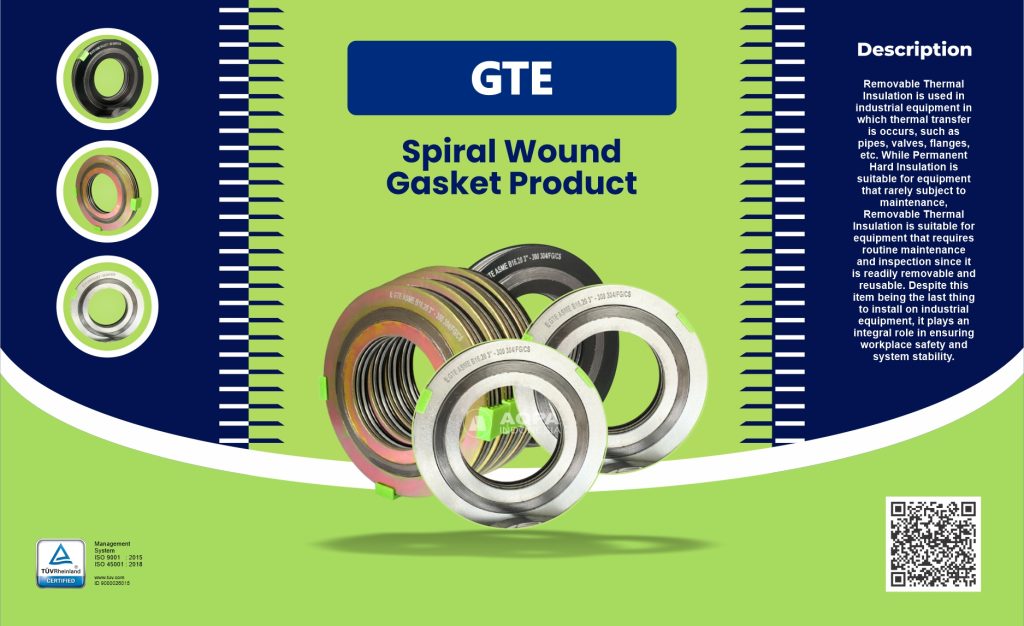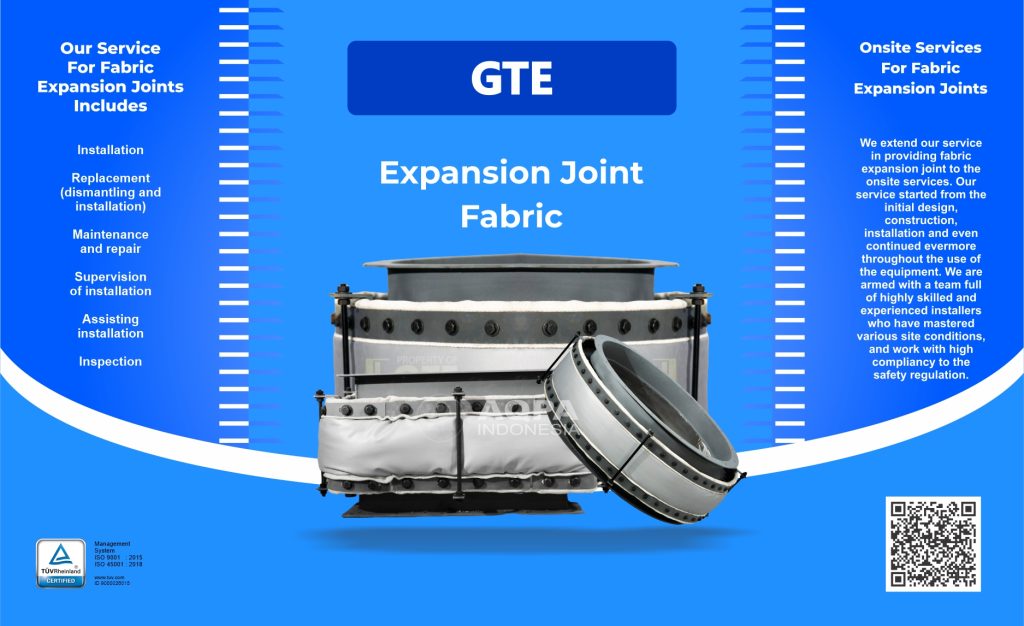
Rubber Expansion Joint
Brand : GTE
Rubber Expansion Joint is a flexible material used to fill the gaps between structural elements. Its primary function is to absorb movement and provide a watertight seal. Available in various forms, including sheets, strips, and custom profiles, expansion joint rubber is designed to withstand environmental stressors and maintain structural integrity.
1. Flexibility and Movement Accommodation
Rubber expansion joints are designed to allow for significant movement up to 30 mm and angel up to 20⁰ due to thermal expansion, contraction, and structural settling. This flexibility helps prevent cracks and structural damage.
2. Vibration and Shock Absorption
Rubber effectively absorbs vibrations and shocks, protecting the integrity of structures and extending the lifespan of equipment and joints.
3. Durability
High-quality rubber is resistant to wear, chemicals, and UV exposure, making it suitable for both indoor and outdoor applications. This durability ensures that the joints remain effective over time, even under harsh conditions.
4. Noise Reduction
High-quality rubber is resistant to wear, chemicals, and UV exposure, making it suitable for both indoor and outdoor applications. This durability ensures that the joints remain effective over time, even under harsh conditions.
5. Cost-Effectiveness
By preventing damage and maintenance costs, expansion joint rubber is a cost-effective solution in the long run. Its durability and performance reduce the need for frequent replacements.
6. Easy Installation
Many rubber expansion joints are designed for straightforward installation, which can help reduce labor costs and project timelines.
1. Neoprene
Known for its excellent weather resistance and durability, neoprene is commonly used in outdoor applications.
2. EPDM (Ethylene Propylene Diene Monomer)
This type of rubber is highly resistant to heat, ozone, and weathering, making it ideal for roofing and construction applications.
3. SBR (Styrene-Butadiene Rubber)
Often used for its good resilience and cost-effectiveness, SBR is suitable for various general-purpose applications.
4. Silicone
With excellent high-temperature resistance, silicone rubber is ideal for specialized applications in extreme conditions.
5. NR ( Natural Rubber )
Natural rubber is an elastic material obtained from the latex of certain trees and plants, most notably the Hevea brasiliensis tree, commonly known as the rubber tree. It is an essential material used in various industries due to its unique properties.
6. NBR ( Nitrile Butadiene Rubber )
Nitrile Butadiene Rubber (NBR), also known as Buna-N or acrylonitrile butadiene rubber, is a synthetic rubber widely used for its excellent resistance to oils, fuels, and other chemicals. It is a copolymer made from acrylonitrile (ACN) and butadiene, which gives it a combination of flexibility and durability.
1. Bridges and Highways
Rubber expansion joint is critical in bridge construction, allowing for movement without compromising structural integrity.
2. Piping Systems
Used in plumbing and industrial piping, rubber joints prevent leaks and accommodate thermal expansion.
3. Buildings
In skyscrapers and large buildings, expansion joints made from rubber allow for movement without damage to walls or ceilings.
4. Roadways
Rubber joints are used in concrete roads to absorb movement and prevent cracking.
5. Marine and Offshore Applications
The durability of rubber makes it suitable for use in marine environments, where exposure to water and salt can degrade other materials.
Table Of Rubber Expansion Joint








